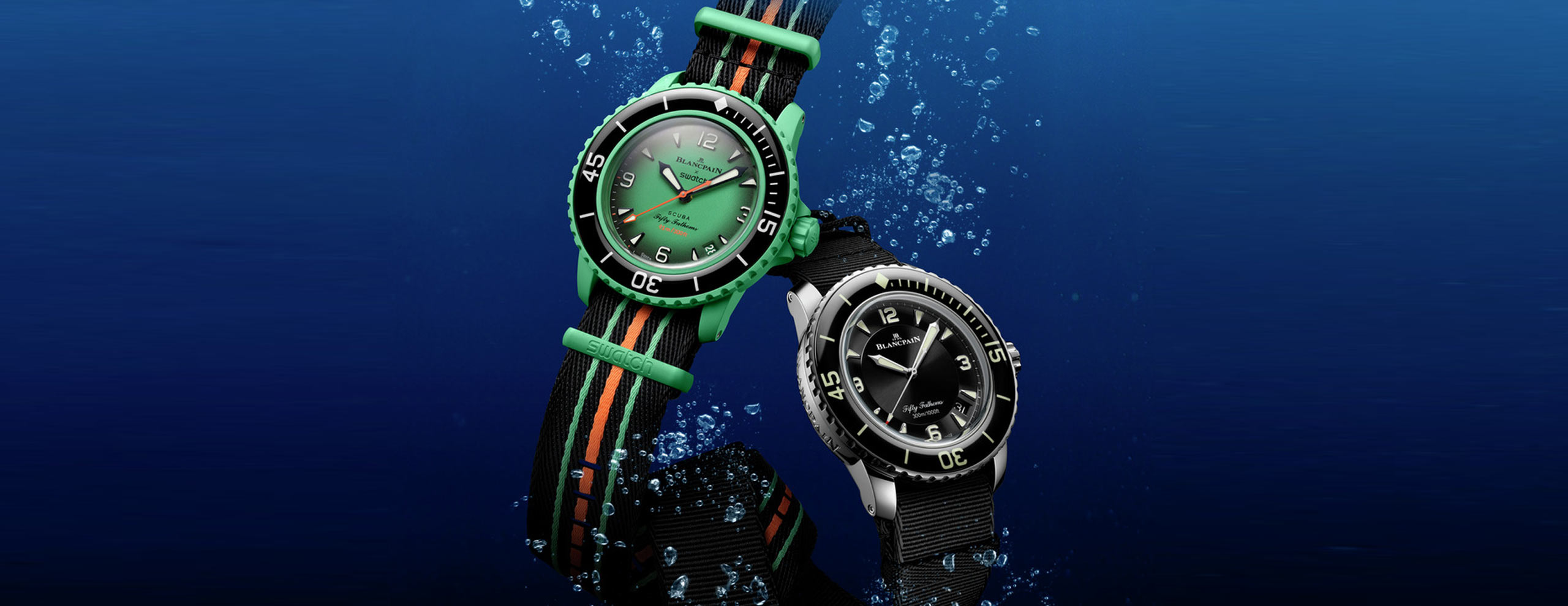News
Beyond the Surface: Three Intriguing Facts About Swatch x Blancpain Scuba Fifty Fathoms
News
Beyond the Surface: Three Intriguing Facts About Swatch x Blancpain Scuba Fifty Fathoms
This has sparked numerous questions about the Scuba Fifty Fathoms. Beginners want to understand its history and relevance, while collectors are curious about its movement’s durability, and both groups are contemplating its price points. In this article, we’ll address three key aspects of the watch that you might want to know: Is the movement repairable? Is the case made of plastic? Is it a dive watch like the original?
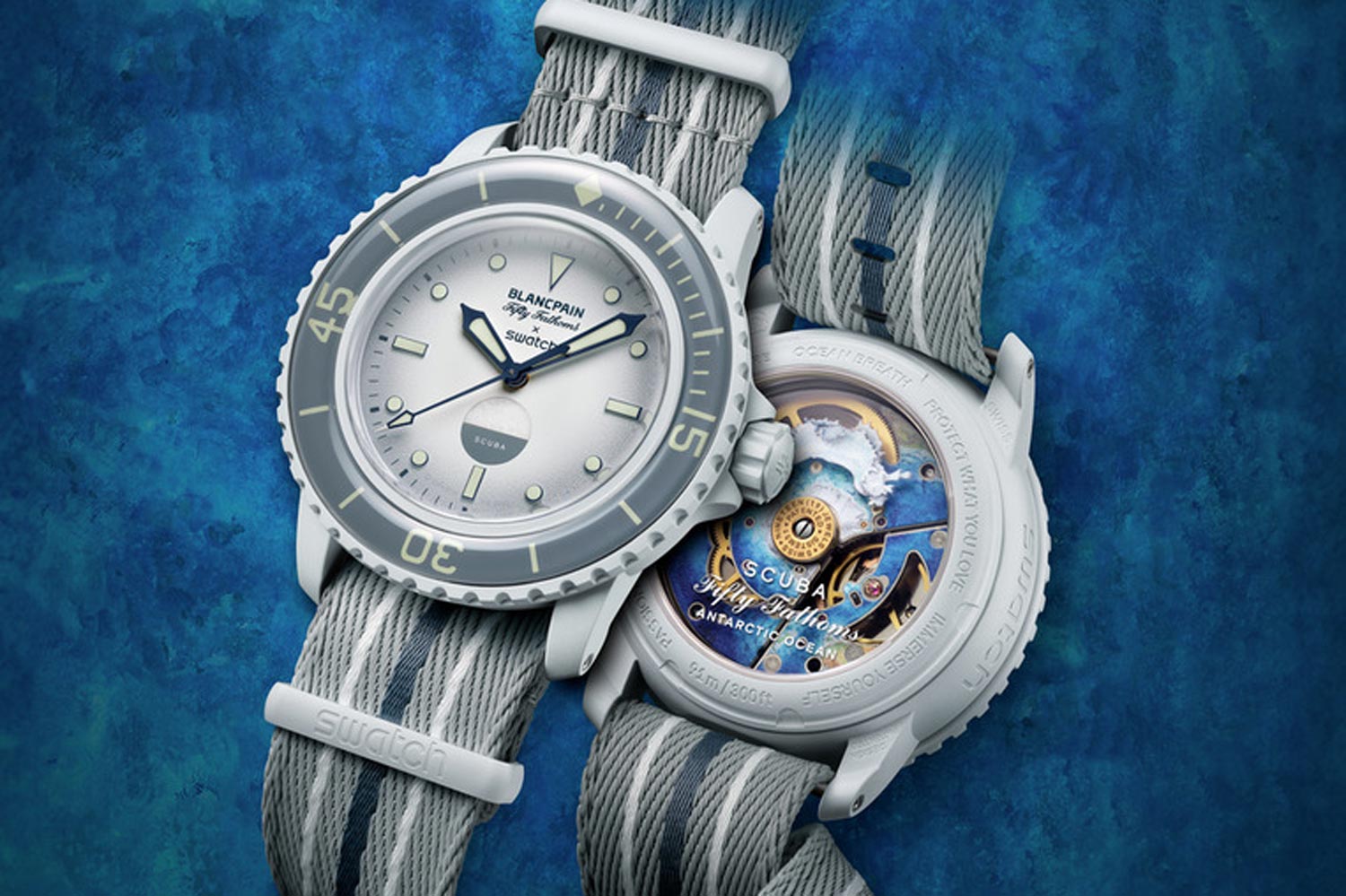
The Scuba Fifty Fathoms Antarctic Ocean
1. The watch is more repairable than it appears
However, our research contradicts this belief, and we confirmed this with Swatch. After years of refinement, Swatch’s mechanical watches have shown to be more repairable than previously thought. There is absolutely no need to discard the watch. Here’s why:
First, let’s understand what Sistem51 is. While Swatch is primarily known for its quartz watches, it has also ventured into mechanical watches. As a high-volume mass producer of timepieces, Swatch’s mechanical watches are designed for efficiency. They feature highly simplified movements with as few parts as possible and undergo an automated assembly process. The result is the Sistem51 movement, announced in 2013 and introduced to the market in 2014. It comprises just 51 components yet boasts impressive features such as anti-magnetism and a 90-hour power reserve.
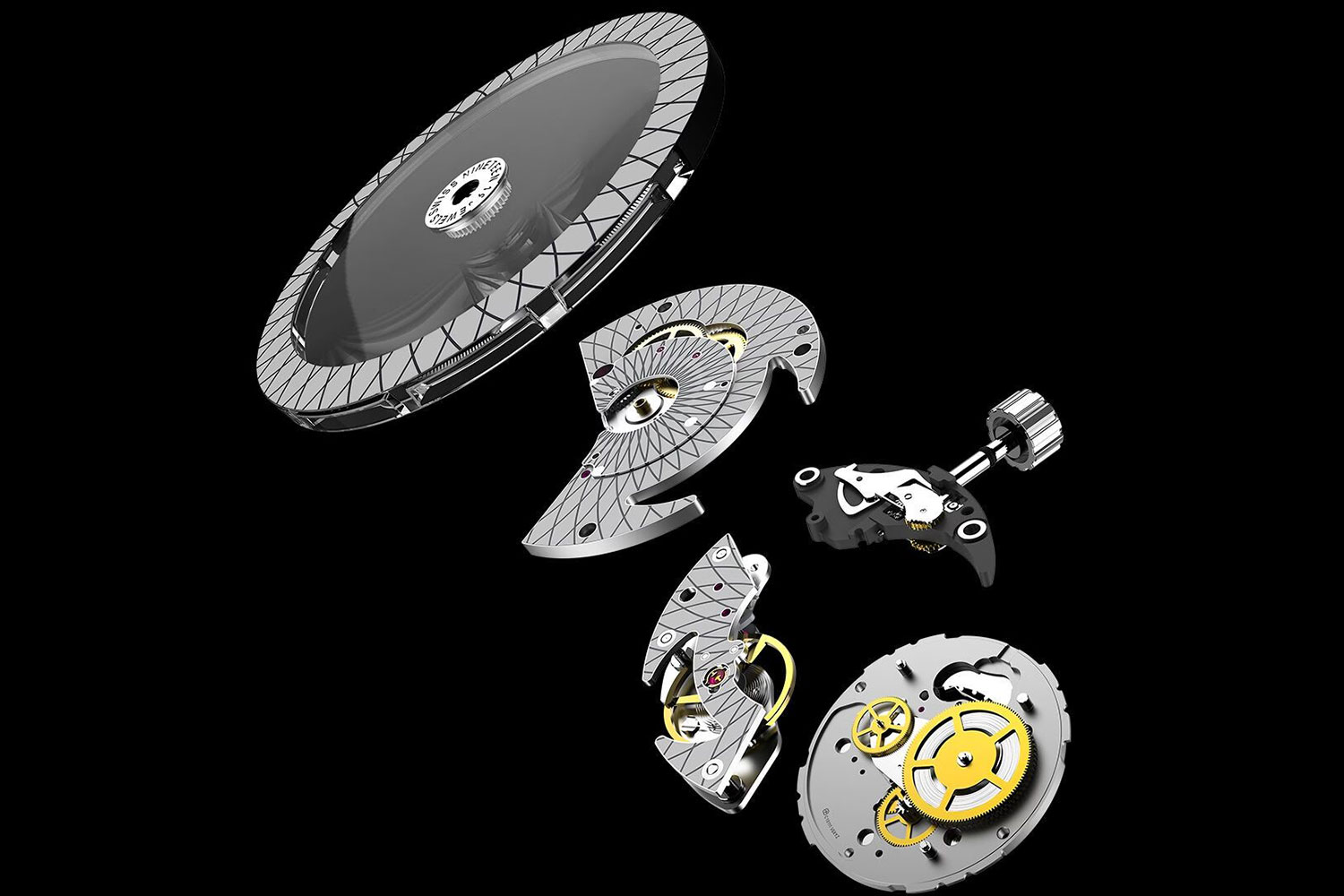
A blow-up view of the Sistem51. The transparent disc at the top is a 'mystery' rotor.
However, it’s worth noting that since the release of the metal-case version of the Sistem51 watches in 2016, Swatch has announced updates to make the watches repairable. An indicator of this improved serviceability is the presence of a removable case back, which is also featured in the latest Scuba Fifty Fathoms, marking a departure from the non-reversible seal found in the earliest plastic models.
We reached out to Swatch and received confirmation that the case back of the Scuba Fifty Fathoms is indeed removable, and the movement will be entirely replaced. This process is similar to how Moser replaces its modular escapement during service, with the distinction that here, the entire movement is swapped. The good news is that you no longer have to discard the entire watch.
In short, the movement inside the Scuba Fifty Fathoms watch is simple and industrial. Even its winding rotor is made of plastic, which helps keep its price affordable. While it may not meet the high standards for quality and materials seen in traditional Swiss movements (you might find it feels a bit finicky when adjusting), it scores well in terms of practical features like a 90-hour running time and resistance to magnetic fields. Most importantly, it’s not a watch you have to throw away after use, providing peace of mind for maintenance and, to some extent, sustainability.
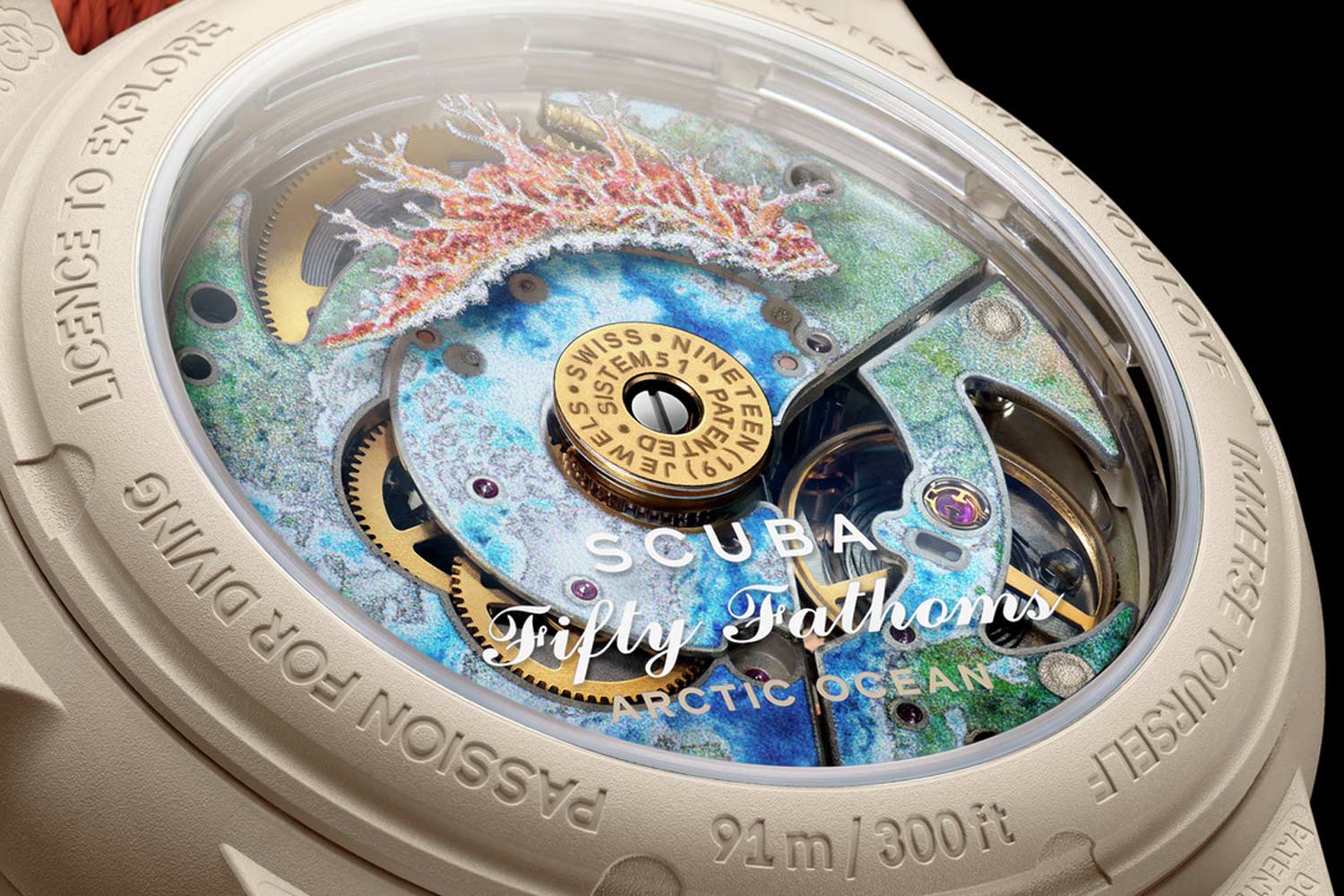
The notches on the case back indicate that it can be removed
2. The case is not true plastic per se
According to Swatch, Bioceramic is a composite material made up of both ceramic and plastic components. Despite its appearance and tactile sensation resembling plastic rather than ceramic (which is unfortunate), it doesn’t fall under the conventional category of plastics. Its exact composition comprises two-thirds ceramic material and one-third bio-sourced plastic, which is notably different from the typical petrochemical-based plastics. Instead, it is derived from castor plant oil, a renewable and plant-based resource.
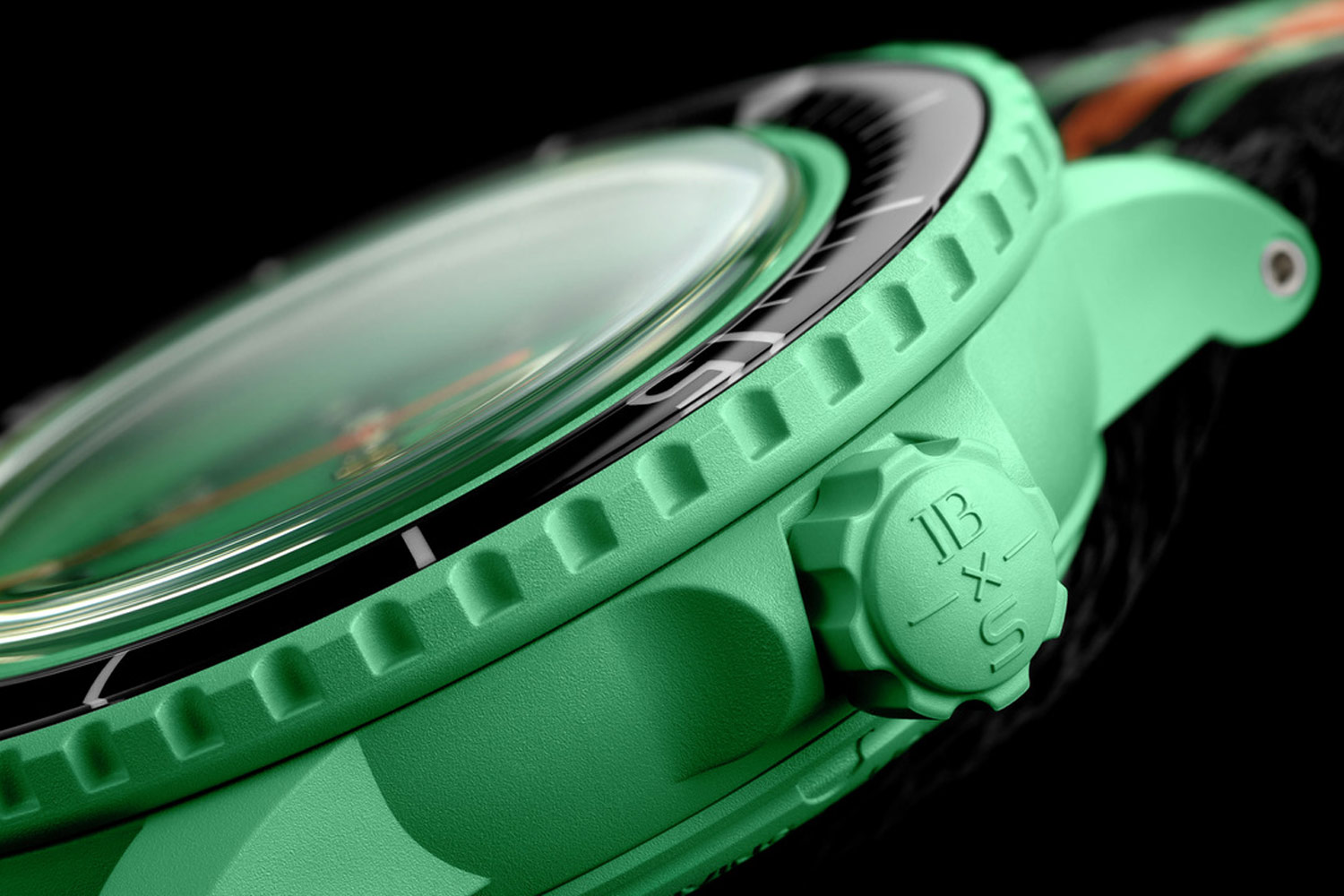
The side of the Scuba Fifty Fathoms Indian Ocean's case
The bezel insert, which appears to be shiny, is of unknown composition; it could be made of plastic or sapphire. Regardless, it does have a beautiful sheen that improves the appearance and tactile quality. In fact, the sheen resembles the high-quality look of the sapphire bezel on the Fifty Fathoms made by Blancpain. It’s worth noting that this detail easily sets the Scuba Fifty Fathoms apart from the MoonSwatch, which had a somewhat basic appearance with its matte bezel that resembled a sticker.
One last note regarding the material is about the strap, which is made of recycled fish nets removed from the sea. While sustainability is a highlight of the strap, it also scores in terms of appearance and feel. The colour is nicely done, and, most importantly, it offers a more supple and comfortable feel compared to the earlier MoonSwatch strap.
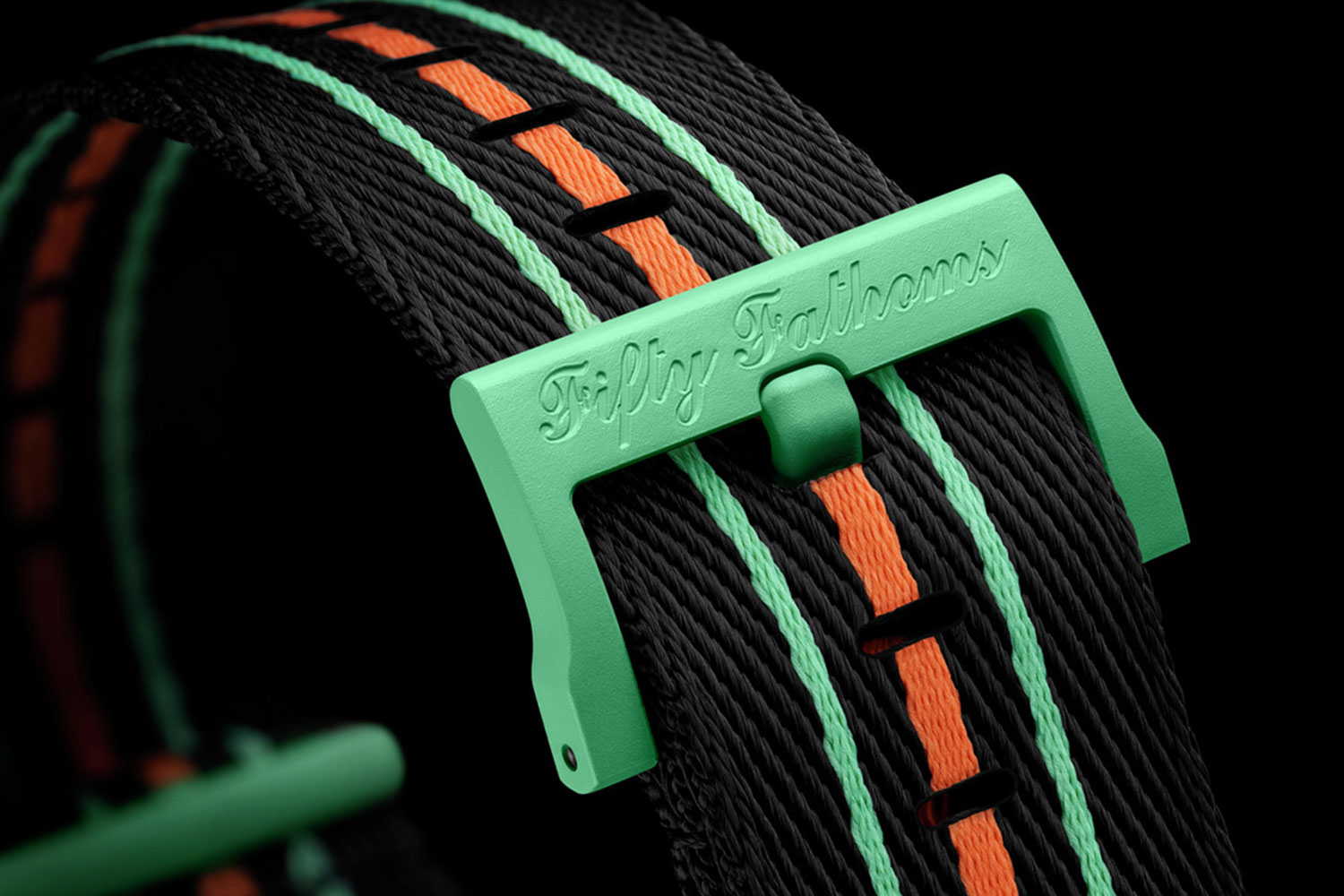
Recycled strap with Bioceramic buckle
3. It’s ready for underwater activities
However, the colourful appearance of the Swatch version has somewhat belied its technical capabilities for underwater use. In all honesty, it’s not as capable as other modern dive watches, but it does capture the original spirit of the Fifty Fathoms.
Similar to the original model from 1953, the Scuba Fifty Fathoms boasts a water resistance rating of 91 metres, equivalent to 50 fathoms. This level of water resistance surpasses the typical Swatch watches, which are often only splash-resistant. As a result, the Scuba Fifty Fathoms is well-suited for various water-related activities. However, it’s important to note that it is not ISO-rated for diving, which requires a minimum water resistance rating of 100 metres, among other criteria.
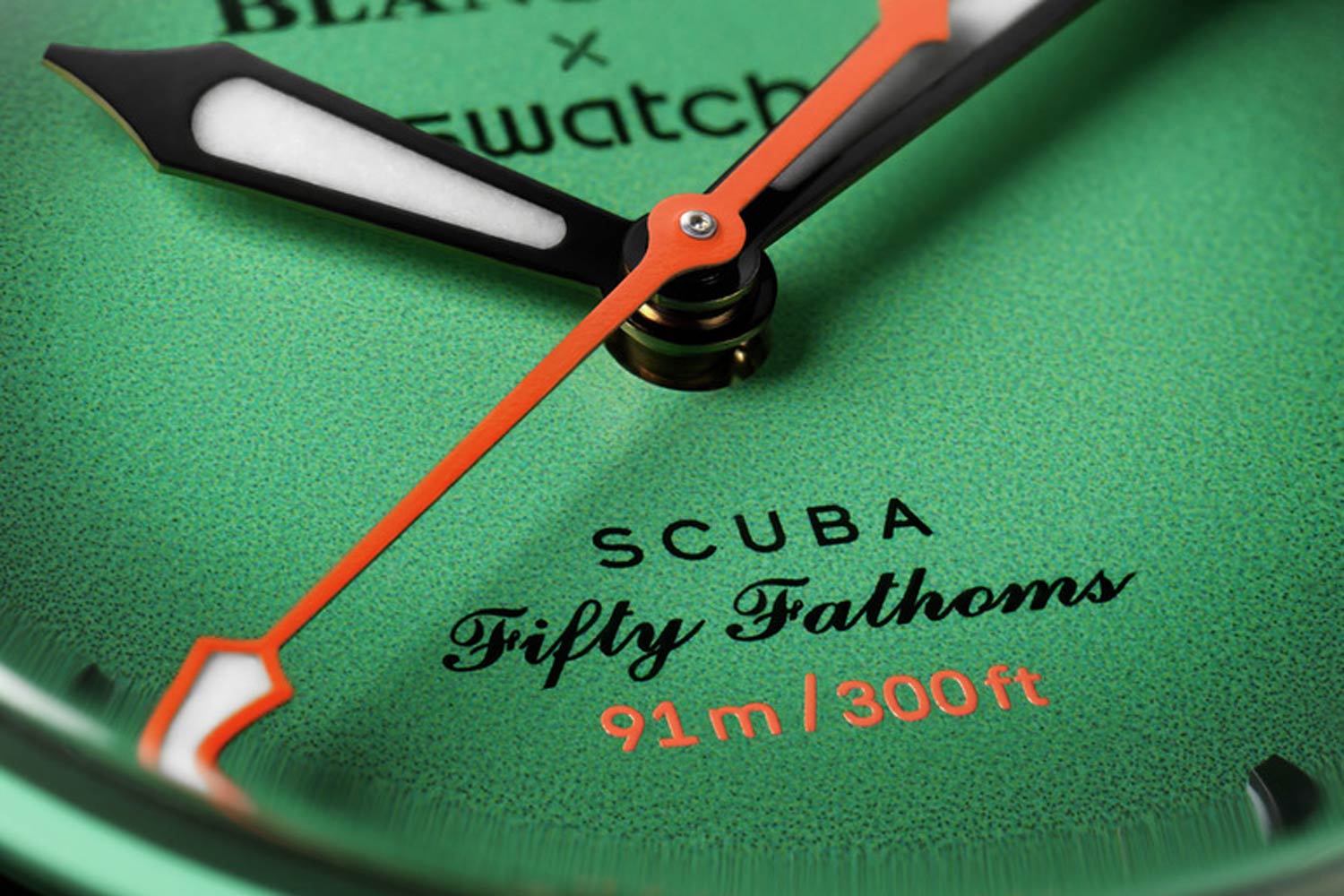
Works fine up to 91 metres underwater
Lastly, the Scuba Fifty Fathoms comes equipped with drilled lugs. In theory, these holes facilitate easier access to and removal of the pins that secure the strap, thus simplifying the strap-changing process. However, it’s important to note that the spring bars on the Scuba Fifty Fathoms are secured with hex screws, a feature borrowed from the original Blancpain Fifty Fathoms, which adds an extra layer of security to the strap.
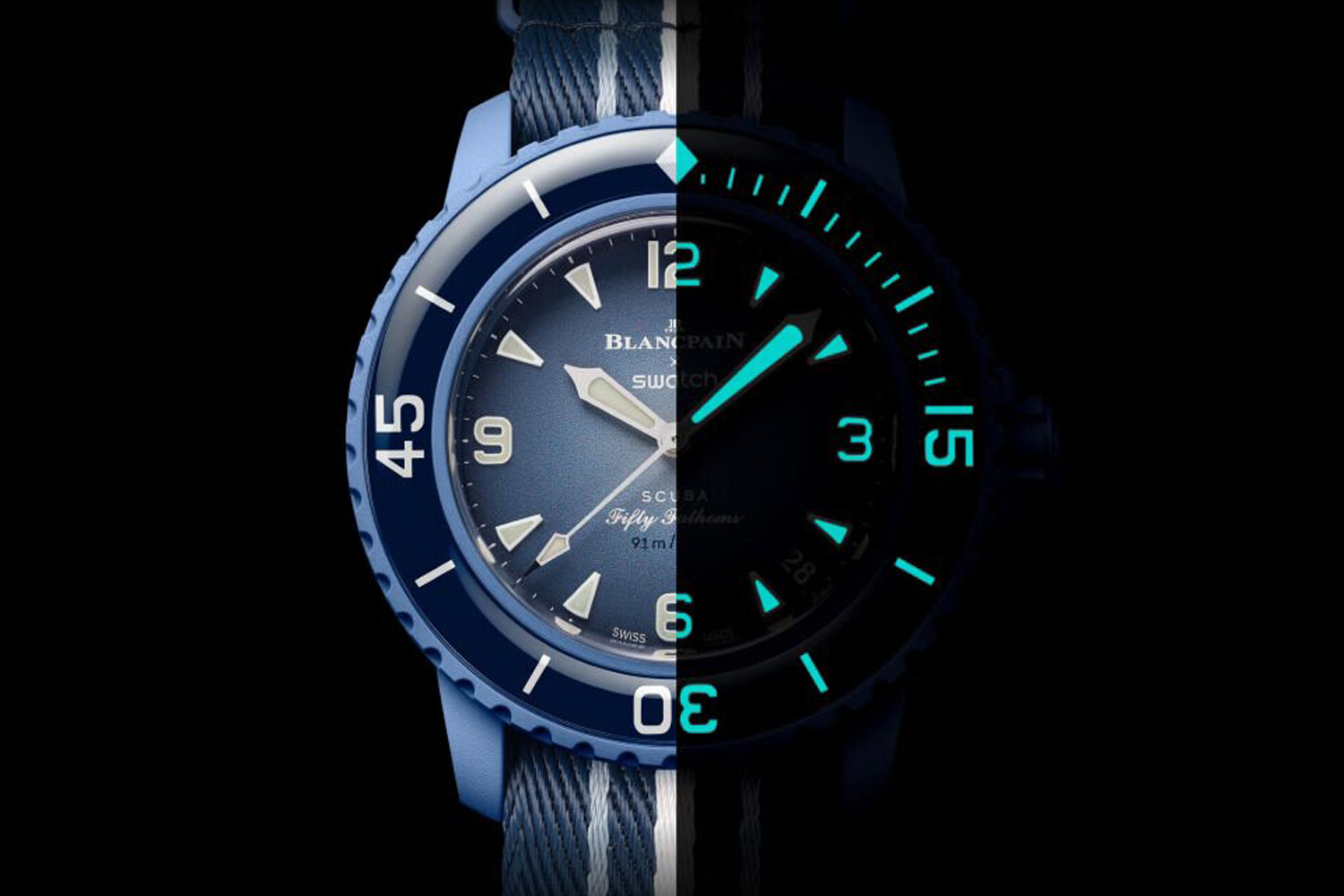
Fully "lumed"
Final thoughts
For those who are worried about how these collaborations might impact Blancpain’s brand image, here’s another way to look at it: Blancpain could simply be sharing its design with brands that can reach a wider audience, similar to how famous artists allow luxury brands to reproduce their paintings on scarves (which can be framed and displayed like artwork).
The Scuba isn’t intended to be a mere copy or a more affordable alternative just because it’s different. It doesn’t replace the Fifty Fathoms; they each have their own unique styles, sizes, materials, construction, and finishes. Considering the price and historical significance of the Fifty Fathoms, it’s unlikely to be negatively affected by these playful Swatch tributes. However, only time will tell if these collaborations will age gracefully.

Blancpain x Swatch Bioceramic Scuba Fifty Fathoms Specs and Price
Functions: Hours, minutes, seconds, and date (except for the Arctic Ocean and Antarctic Ocean versions)
Case: 42.3 mm; Bioceramic; water resistant to 91m
Strap: NATO strap
Price: USD 400
Limited edition: No
Update October 5, 2023: We have received confirmation from Swatch that the case back is indeed removable, as initially stated in the article. Furthermore, Swatch has clarified that the movement will be replaced, rather than repaired.
Correction October 5, 2023: The ISO 6425:2018 diver’s watch certification requires a water resistance of at least 100 meters, and not 200 meters, as originally stated in the article.




